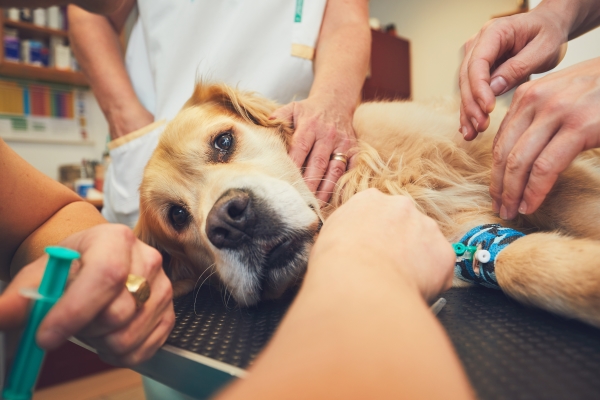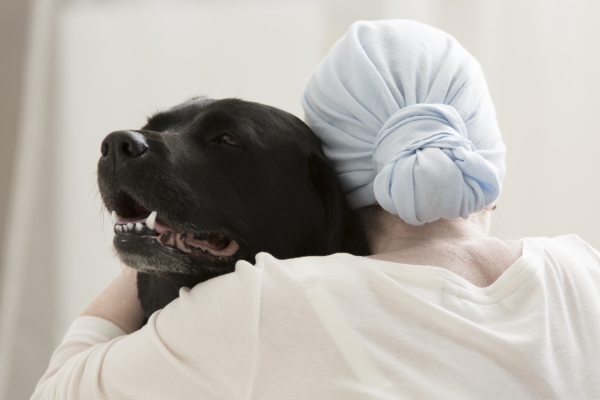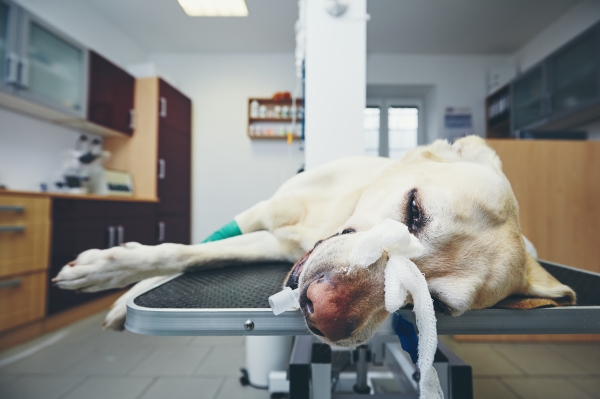
Contact us!
Pain Management
Aloropi Vet Center offers anaesthesia services that aim to deliver pain management in cats and dogs. Our state-of-the-art clinic is led by internationally renowned specialists who are committed to providing top-notch services in every field of veterinary care.
We perform a detailed diagnostic analysis of your pet to find out the root of the problem. Once found, we start the treatment process right away.
Don't let your Pet Suffer
We as humans know what 'pain' feels like. In fact, we can diagnose pain associated with any disrupted condition in our lives. Unlike humans, pets can't verbally describe the area where they are feeling pain. Instead, they show us signs or a behavioral change in their mood.
Vets have developed different tools that help them understand the signs. While it is still difficult to jump to a conclusion, they often run a lab test to try and find out the source. Our Pain Management team is led by experienced professionals who have experience managing pets with chronic pain.


Pain Management Help Recover Animal Fast
Using different behavioral indications and lab tests, we try to find out why the problem happens in the first place. Pain in animals is mostly associated with physical problems. Evaluating the pet and the extent of pain helps us sufficiently diagnose the problem. Good Pain management can help your pet recover faster from misery.
Signs of Pain in Pets
A pet owner can play a central role in identifying the pain in a pet. Take your pet to the veterinary if you feel any of the following physical signs.
- Change in posture or movement
- Change in breathing
- Change in heart rate
- Slowed or dull reflexes

Types of Pain in Animals
The most common type of pain in animals is categorized below.
Acute Pain
This is the most noticeable pain that can happen in response to any undesirable stimulus or tissue injury.
Chronic Pain
A pain that takes a little longer for healing. It can be associated with noncancerous.
Cancer Pain
It has components of both chronic and acute pain. This includes primary tumor growth or spreading of the virus in the body.
Neuropathic Pain
This results from damage to the central nervous system. It requires persistent care and extensive medical treatment.
Principles of Pain Management in Cats & Dogs
- Access the animal for pain using behavioral clues
- Develop a customizable pain management plan from your pet
- Start the treatment process for the pain
- Diagnose your pet for any physical changes
- Provide continuous administration from a pain clinic specialist


How do we manage Pain?
Every pet in the clinic will be regularly assessed with a specialized pain scoring management system. The system is customizable for both cats and dogs. Once the source of the pain is identified, we manage this with local anesthesia, drugs, and other conventional methods like acupuncture and physiotherapy.
We are the only Pain Management clinic in Sharjah that offers a complete diagnostic procedure or any terminal conditions. Our main objective is to improve the quality of life of your pet. Feel free to contact us for detailed guidelines.
The Right Type of Care for your Pet
The initial consultation includes a discussion of your pet’s medical history, diet, daily activity, environment, and exercise regime. It allows us to treat the problem with a more in-depth assessment as well as suits the expectation of the client.
Following assessment, we will provide you with a detailed treatment chart that ranges from your pet diet, exercise routines, medications, environmental lifestyle changes, and acupuncture.

Frequently Asked Questions
How can I comfort my dog in pain?
The initial confrontation would be to provide them with a soft couch or bed with a fluffy blanket. If the pain doesn’t stop, take them to a pain clinic center.
What can you give a dog for pain relief?
Your veterinarian will recommend you the medication after analyzing your dog’s condition. Don’t use any drugs without supervision.
How can I tell if my dog is suffering?
Your pet will show signs of suffering, change in behavior, being more vocal, signs of agitation, mobility issue, and breathing problems.